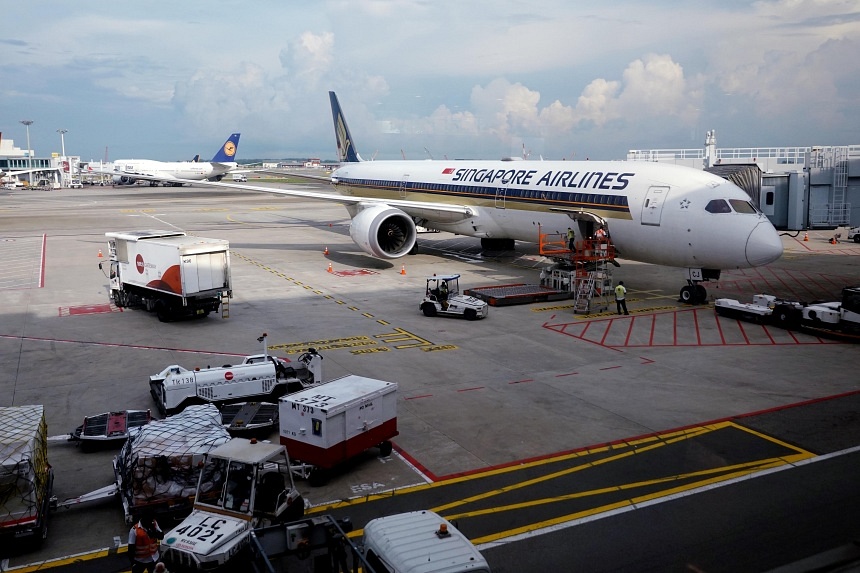SINGAPORE – A trial that has allowed pilots on certain flights to choose the most direct and efficient paths has been extended by almost six months until the end of April 2025.
The air traffic management concept – called user-preferred routing (UPR) – lets pilots decide their flight paths, in the hopes of shortening flight times, saving fuel and reducing carbon emissions if wind conditions are in their favour.
Traditionally, pilots have to use a fixed network of airways to get from one point to another.
The Civil Aviation Authority of Singapore (CAAS) announced in August that the UPR trial had begun on 38 routes between destinations in Singapore, Indonesia, Australia and New Zealand. The flights are operated by national flag carriers Singapore Airlines (SIA), Garuda Indonesia, Qantas and Air New Zealand.
These routes include those from Singapore to Adelaide, Auckland, Brisbane, Cairns, Christchurch, Darwin, Melbourne and Perth, as well as from Sydney to Singapore.
Mr Vincent Hwa, director of air traffic services at CAAS, told The Straits Times that feedback for the trial from the carriers and the air navigation service providers involved has been positive.
The three-month trial was initially set to end in early November.
The extension will allow the parties involved to collect more data on the benefits of UPR over a longer period, and to expand the trial to cover more of the Asia-Pacific region, Mr Hwa said.
CAAS and its Japanese counterpart, the Japan Civil Aviation Bureau, recently agreed to encourage the use of UPR in the region.
Mr Mayur Patel, head of Asia at aviation data consultancy OAG Aviation, said the use of UPR benefits passengers in several ways.
Besides shorter travel times, UPR offers pilots a degree of flexibility that may allow them to avoid turbulence, resulting in a more comfortable flight, he noted.
Flying an optimised route results in lower fuel consumption, which translates to reduced operating costs for airlines. This may “potentially lower fares for passengers”, Mr Patel said.
He added that the concept also improves reliability by “supporting punctuality and on-time performance”, resulting in a better passenger experience.
UPR has been tested as far back as 2008 and the practice already exists in places such as the majority of Australia’s airspace. Its use on international flights has been limited until now because of the complexities of navigating airspaces managed by various countries, which may have different systems and involve multiple parties.
An SIA spokesperson told ST that the airline’s participation in the UPR trial is progressing well.
UPR will help SIA “achieve time and fuel savings when environmental conditions are favourable on these routes”, the spokesperson said. “This will potentially enhance our customers’ convenience when they fly with us, and reduce SIA’s emissions.”
Mr Cam Wallace, chief executive of Qantas International, said the trial has demonstrated an “impressive benefit” for the Australian airline, allowing it to save time, fuel and carbon emissions for its flights to and from Asia.

